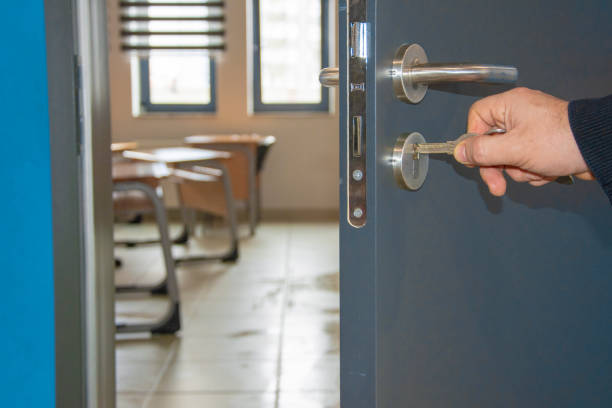Another email, another professional development meeting, another day of planning lost.
When I was first introduced to the College, Career, and Community Writer’s Project (C3WP), I’ll admit that I was not thrilled. I had experienced far too many “professional development” sessions in my four years of teaching to expect much. It’s hard to believe that such disillusionment can develop in four short years, but that is the reality of this high-stress career.
I didn’t know it yet, but I had succumbed to teacher burnout. In fact, I would find myself taking a year off from the classroom to try and sort things out; I never thought I’d go back. But the sparks that came from that PD session would reignite my love for the profession. And, as corny as it sounds, it would transform my classroom and my practice.
I can already sense your skepticism.
Survival Mode
My first encounter with C3WP was the year before I left the classroom. I was unhappy with the profession, tired of the politics, yearning for something with room for advancement. In short, teaching wasn’t the fulfilling profession I expected it to be.
C3WP did a lot to get me through that year. Despite my initial skepticism, I quickly realized that this was something different. My students were engaged and excited about reading and writing, and I was eager to hear their informed opinions. After several cycles of PD, instruction, and formative assessment, I saw that my students were learning to respectfully disagree with each other. The nuance apparent in their writing highlighted their mastery of argument as multi-perspective conversation rather than just pro/con. I had an amazing Thinking Partner who helped me brainstorm through so many ideas and hang-ups. In fact, the collaborative relationship that began between us that year still continues today. In the end, my students even came out of their state test filled with confidence, and their scores proved the efficacy of the program.
But it still wasn’t enough.
Let me be clear: this was not the fault of my school district. Teaching as a whole is a stressful, isolating profession, and I thought that it had nothing left to offer me. For this reason, I left the classroom—a situation that I thought would be permanent. But the South Mississippi Writing Project reached out to me. I had never felt that kind of support as a teacher; usually when I needed help, I had to seek it out or just fumble until things worked themselves out.
I had become part of the project’s professional network, and they supported me when I needed them most. It was at that point that things really began to turn around for me.
A New Perspective
Through a strange twist of fate, I became a C3WP thinking partner and PD facilitator in the same district that I had just left behind. I visited classrooms, led PD sessions, and brainstormed with these former coworkers in a way that I had never been able to before. In fact, I realized that I had never had the chance to work closely with my colleagues, especially those who taught different grades and at different schools. It was refreshing to have the opportunity to share ways that my tenth graders learned with fourth, fifth, and sixth grade teachers in the same district. We discussed strategies, expectations, and classroom experiences to gain a deeper understanding of the core ELA standards. I even had the opportunity to co-teach with them in their own classrooms, which helped me better understand the foundations of the skills that I was teaching to high school students. Plus, I got to experience the unrestrained excitement of young children who are learning something new.
The streamlining and collaboration opened my eyes to a valuable resource that I had never even considered: the elementary school right behind my own former classroom. This new perspective gave me a much clearer picture of the learning and teaching that went on across the district. By experiencing how a fourth grader sees argument versus how a sixth grader builds on these previous skills, I gained a new appreciation for the recursive nature of critical reading and writing skills, and I felt much more capable of addressing the learning gaps of a tenth grader because I knew how these skills were taught in earlier grades (and how students tended to respond).
A New Beginning
I came back to the classroom face-to-face this year, in the middle of a pandemic, with more excitement than I had ever felt before. Instead of falling back on the same tired icebreakers, I started my year with introductory C3WP resources to establish a culture of reading, writing, and respectful discourse right from the start. Not only did this connect my students with their peers, but it also made them feel more connected to the arguments going on right now in the world. My students were even able to discuss more sensitive topics, like police use of force, in a way that acknowledged and respected the views of their peers while also broadening their own perspectives.
Now, my students eagerly read and write; they know that the work they will do is authentic and meaningful. The connections they have still been able to forge in a socially distanced classroom surprise me each day, from asking for peer review (without teacher prompting) to relying on each other to clarify misunderstandings before they turn to me for help. My classroom has become one of inquiry and multiple perspectives, and I look forward to coming to work every morning to learn with my students. I easily weave the practices that I learned in C3WP throughout all of my units, and students have become adept at making connections across writing genres.
In order to meet my own professional needs, I continue to communicate with my writing project weekly, and I have had the chance to be part of so many exciting conversations, workshops, brainstorming sessions, and more. I am much more confident when speaking to colleagues and administrators; I know that my perspective is valuable because it has been informed by the knowledge of other teachers as well as my own experiences. I take risks in my classroom because I see myself as a learner right alongside my students, and I model constructive risk-taking and how to cope with obstacles and even failures. I am a true advocate for myself, my students, and my profession.

Connect
C3WP sparked my love for teaching, but the close network of supportive professionals with which it linked me has been invaluable. The resources in the project are available to everyone, but the close connections that you forge by completing the project with your school colleagues and the relationships that you build with other writing project members are so crucial to avoiding teacher burnout.
Whether you find yourself feeling “stuck”, in danger of succumbing to burnout, or just looking for something new, reach out to your local writing project site.
You are not alone, and it took C3WP to remind me of that.



